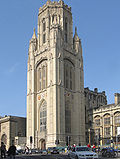University of Bristol

 Clash Royale CLAN TAG#URR8PPP
Clash Royale CLAN TAG#URR8PPP  | |
Latin: Universitas Bristolliensis | |
Other names |
|
|---|---|
| Motto | Vim promovet insitam |
Motto in English | "[Learning] promotes one's innate power" – from Horace, Ode 4.4[1] |
| Type | Public red brick research university |
| Established |
|
| Endowment | £70.8m (as of 31 July 2017)[2] |
| Budget | £617.9 million (2016-17)[2] |
| Chancellor | Sir Paul Nurse[3] |
| Vice-Chancellor | Hugh Brady |
| Visitor | The Lord President of the Council ex officio[4] |
Administrative staff | 6,199[5] |
| Students | 23,590 (2016/17)[6] |
| Undergraduates | 17,630 (2016/17)[6] |
| Postgraduates | 5,960 (2016/17)[6] |
| Location | Bristol, England 51°27′23″N 02°36′16″W / 51.45639°N 2.60444°W / 51.45639; -2.60444Coordinates: 51°27′23″N 02°36′16″W / 51.45639°N 2.60444°W / 51.45639; -2.60444 |
| Campus | Urban |
| Students' Union | University of Bristol Union |
| Colours | Pantone 187[7] |
| Affiliations | Russell Group Coimbra Group Worldwide Universities Network Universities UK PEGASUS SETsquared GW4 |
| Website | bristol.ac.uk |
 | |
The University of Bristol (simply referred to as Bristol University and abbreviated as Bris. in post-nominal letters, or UoB) is a red brick research university located in Bristol, United Kingdom.[8] It received its royal charter in 1909,[9] although like the University of the West of England and the University of Bath, it can trace its roots to the Merchant Venturers Technical College, founded as a school in 1595 by the Society of Merchant Venturers. Its key predecessor institution, University College, Bristol, had been in existence since 1876.[10]
Bristol is organised into six academic faculties composed of multiple schools and departments running over 200 undergraduate courses largely situated in the Tyndalls Park area of the city.[11] The university had a total income of £617.9 million in 2016/17, of which £155.4 million was from research grants and contracts.[2] It is the largest independent employer in Bristol.[12]
The University of Bristol is ranked 44th by the QS World University Rankings 2018, and is ranked amongst the top 10 of UK universities by QS,[13]THE,[14] and ARWU. A highly selective institution, it has an average of 6.4 (Sciences faculty) to 13.1 (Medicine & Dentistry Faculty) applicants for each undergraduate place.[15] It was ranked 9th in the UK amongst multi-faculty institutions for the quality (GPA) of its research[16] and for its Research Power in the 2014 Research Excellence Framework.[17]
Current academics include 21 fellows of the Academy of Medical Sciences, 13 fellows of the British Academy, 13 fellows of the Royal Academy of Engineering and 44 fellows of the Royal Society.[18] The university has been associated with 13 Nobel laureates throughout its history, including Paul Dirac, Sir William Ramsay, Cecil Frank Powell, Sir Winston Churchill, Dorothy Hodgkin, Hans Albrecht Bethe, Max Delbrück, Gerhard Herzberg, Sir Nevill Francis Mott, Sir Paul Nurse, Harold Pinter, Jean-Marie Gustave Le Clézio and most recently, 2015 Economics Nobel Prize winner Angus Deaton.
Bristol is a member of the Russell Group of research-intensive British universities,[19] the European-wide Coimbra Group[20] and the Worldwide Universities Network, of which the university's previous vice-chancellor, Eric Thomas, was chairman from 2005 to 2007.[21] In addition, the university holds an Erasmus Charter, sending more than 500 students per year to partner institutions in Europe.[22]
Contents
1 History
1.1 Foundation
1.2 Historical development
1.2.1 Early years
1.2.2 Post-war development
1.2.3 2003 admissions controversy
2 Campus
3 Organisation and governance
3.1 Faculty of Arts
3.2 Faculty of Engineering
3.3 Faculty of Biomedical Sciences
3.4 Faculty of Science
3.5 Faculty of Health Sciences
3.6 Faculty of Social Sciences and Law
3.7 Academic dress
3.8 Logo and arms
4 Academic profile
4.1 Admissions
4.2 Rankings and reputation
4.3 Degrees
5 Student life
5.1 Students' union
5.2 Halls of residence
6 Notable people
6.1 Academics
6.2 Alumni
7 See also
8 Notes
9 Notes and references
10 Further reading
11 External links
History
Foundation
The earliest antecedent of the university was the engineering department of the Merchant Venturers' Technical College (founded as a school as early as 1595) which became the engineering faculty of Bristol University.[23] The university was also preceded by Bristol Medical School (1833) and University College, Bristol, founded in 1876,[10] where its first lecture was attended by only 99 students.[24] The university was able to apply for a royal charter due to the financial support of the Wills and Fry families, who made their fortunes in tobacco plantations and chocolate, respectively. The Wills Family made a vast fortune from the tobacco industry and gave generously to the city and university. The royal charter was gained in May 1909, with 288 undergraduates and 400 other students entering the university in October 1909. Henry Overton Wills III became its first chancellor.[10] The University College was the first such institution in the country to admit women on the same basis as men.[10] However, women were forbidden to take examinations in medicine until 1906.[25]
Historical development
There shall be from henceforth for ever in Our said City of Bristol a University... |
King Edward VII, Charter of Incorporation of the University of Bristol, 4 December 1909[26] |
Since the founding of the university itself in 1909, it has grown considerably and is now one of the largest employers in the local area, although it is smaller by student numbers than the nearby University of the West of England.[27] Bristol does not have a campus but is spread over a considerable geographic area. Most of its activities, however, are concentrated in the area of the city centre, referred to as the "University Precinct". It is a member of the Russell Group of research-led UK universities, the Coimbra Group of leading European universities and the Worldwide Universities Network (WUN).
Early years

The Wills Memorial Building (Schools of Law and Earth Sciences) on Park Street, Bristol. The tower was cleaned in 2006–2007.[28]
After the founding of the University College in 1876, Government support began in 1889. After mergers with the Bristol Medical School in 1893 and the Merchant Venturers' Technical College in 1909,[29] this funding allowed the opening of a new medical school and an engineering school—two subjects that remain among the university's greatest strengths. In 1908, gifts from the Fry and Wills families, particularly £100,000 from Henry Overton Wills III (£6m in today's money), were provided to endow a University for Bristol and the West of England, provided that a royal charter could be obtained within two years. In December 1909, the King granted such a charter and erected the University of Bristol.[26] Henry Wills became its first chancellor and Conwy Lloyd Morgan the first vice-chancellor.[30] Wills died in 1911 and in tribute his sons George and Harry built the Wills Memorial Building, starting in 1913 and finally finishing in 1925.[31] Today, it houses parts of the academic provision for earth sciences and law, and graduation ceremonies are held in its Great Hall. The Wills Memorial Building is a Grade II* listed building.[32]
In 1920, George Wills bought the Victoria Rooms and endowed them to the university as a Students' Union.[10]
The building now houses the Department of Music and is a Grade II* listed building.[33]
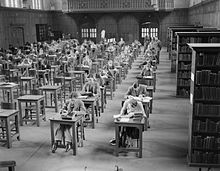
Evacuated King's College London students at the University of Bristol in 1940
At the point of foundation, the university was required to provide for the local community. This mission was behind the creation of the Department of Extra-Mural Adult Education in 1924 to provide courses to the local community. This mission continues today; a new admissions policy specifically caters to the 'BS' postcode area of Bristol.[34]
Among the famous names associated with Bristol in this early period is Paul Dirac, who graduated in 1921 with a degree in engineering, before obtaining a second degree in mathematics in 1923 from Cambridge. For his subsequent pioneering work on quantum mechanics, he was awarded the 1933 Nobel Prize for Physics.[35] Later in the 1920s, the H.H. Wills Physics Laboratory was opened by Ernest Rutherford.[36] It has since housed several Nobel Prize winners: Cecil Frank Powell (1950);[37]Hans Albrecht Bethe (1967);[38] and Sir Nevill Francis Mott (1977).[39] The Laboratory stands on the same site today, close to the Bristol Grammar School and the city museum.
Sir Winston Churchill became the university's third chancellor in 1929, serving the university in that capacity until 1965.[10] He succeeded Richard Haldane who had held the office from 1912 following the death of Henry Wills.[25][30]
During World War II, the Wills Memorial was bombed, destroying the Great Hall and the organ it housed,[10] along with 7,000 books removed from King's College London for safe keeping. It has since been restored to its former glory, complete with oak panelled walls and a new organ.
Post-war development
In 1946, the university established the first drama department in the country.[10] In the same year, Bristol began offering special entrance exams and grants to aid the resettlement of servicemen returning home. Student numbers continued to increase, and the Faculty of Engineering eventually needed the new premises that were to become Queen's Building in 1955. This substantial building housed all of the university's engineers until 1996, when the department of Electrical Engineering and Department of Computer Science moved over the road into the new Merchant Venturers' Building to make space for these rapidly expanding fields. Today, Queen's Building caters for most of the teaching needs of the Faculty and provides academic space for the "heavy" engineering subjects (civil, mechanical, and aeronautical).
With unprecedented growth in the 1960s, particularly in undergraduate numbers, the Student's Union eventually acquired larger premises in a new building in the Clifton area of the city, in 1965. This building was more spacious than the Victoria Rooms, which were now given over to the Department of Music. The new Union provides many practice and performance rooms, some specialist rooms, as well as three bars: Bar 100; the Mandela (also known as AR2) and the Avon Gorge. Whilst spacious, the Union building is thought by many to be ugly[40] and out of character compared to the architecture of the rest of the Clifton area, having been mentioned in a BBC poll to find the worst architectural eyesores in Britain.[41] The university has proposed relocating the Union to a more central location as part of its development 'masterplan'.[42] More recently, plans for redevelopment of the current building have been proposed.[43]
The 1960s were a time of considerable student activism in the United Kingdom, and Bristol was no exception. In 1968, many students marched in support of the Anderson Report, which called for higher student grants. This discontent culminated in an 11-day sit-in at the Senate House (the administrative headquarters of the university).[10] A series of chancellors and vice-chancellors led the university through these decades, with Henry Somerset, 10th Duke of Beaufort taking over from Churchill as chancellor in 1965 before being succeeded by Dorothy Hodgkin in 1970 who spent the next 18 years in the office.[30]
As the age of mass higher education dawned, Bristol continued to build its student numbers. The various undergraduate residences were repeatedly expanded and, more recently, some postgraduate residences have been constructed. These more recent ventures have been funded (and are run) by external companies in agreement with the university.
Since 1988, there have been only three further chancellors; Sir Jeremy Morse, then chairman of Lloyds Bank who handed over in 2003 to Brenda Hale, the first female Law Lord.[25][30]Sir Paul Nurse succeeded Lady Hale as Chancellor on 1 January 2017.
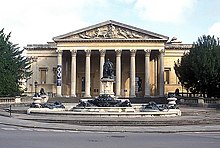
The Victoria Rooms, housing the School of Music
One of the few Centres for Deaf Studies in the United Kingdom was established in Bristol in 1981, followed in 1988 by the Norah Fry Centre for research into learning difficulties. Also in 1988, and again in 2004,[44] the Students' Union AGM voted to disaffiliate from the National Union of Students (NUS). On both occasions, however, the subsequent referendum of all students reversed that decision and Bristol remains affiliated to the NUS.
In 2002, the university was involved in argument over press intrusion after details of then-prime minister Tony Blair's son's application to university were published in national newspapers.
As the number of postgraduate students has grown (particularly the numbers pursuing taught master's degrees), there eventually became a need for separate representation on university bodies and the Postgraduate Union (PGU) was established in 2000.[45]
Universities are increasingly expected to exploit the intellectual property generated by their research activities and, in 2000, Bristol established the Research and Enterprise Division (RED) to further this cause (particularly for technology-based businesses). In 2001, the university signed a 25-year research funding deal with IP2IPO, an intellectual property commercialisation company.[46] In 2007, research activities were expanded further with the opening of the Advanced Composites Centre for Innovation and Science (ACCIS) and The Bristol Institute for Public Affairs (BIPA).
In 2002, the university opened the new Centre for Sports, Exercise and Health in the heart of the university precinct.[47] At a cost, local residents are also able to use the facilities.[48]
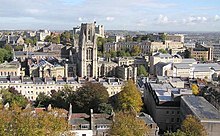
Most of the buildings here are used by the university. The Wills Memorial Building is left of centre. Viewed from the Cabot Tower on Brandon Hill
Expansion of teaching and research activities continues. In 2004, the Faculty of Engineering completed work on the Bristol Laboratory for Advanced Dynamics Engineering (BLADE). This £18.5m project[49] is intended to further the study of dynamics and is the most advanced such facility in Europe.[citation needed] It was built as an extension to the Queen's Building and was officially opened by Queen Elizabeth II in March 2005.
In January 2005, the School of Chemistry was awarded £4.5m by the Higher Education Funding Council for England to create Bristol ChemLabS: a Centre for Excellence in Teaching & Learning (CETL),[50] with an additional £350k announced for the capital part of the project in February 2006. Bristol ChemLabS stands for Bristol Chemical Laboratory Sciences; it is the only chemistry CETL in the UK.
September 2009 saw the opening of the university's Centre for Nanoscience and Quantum Information. This £11 million building is dubbed[clarification needed] as the quietest building in the world and has other technologically sophisticated features such as self-cleaning glass. Advanced research into quantum computing, nanotechnology, materials and other disciplines are being undertaken in the building.[51]
There is also a plan to significantly redevelop the centre of the University Precinct in the coming years.[52] The first step began in September 2011, with the start of construction of a state-of-the-art Life Sciences building. In a time of heavy financial pressures on all Universities, this £50 million project is a clear statement that Bristol is committed to world class research and teaching facilities.[53]
In 2018 while building work was underway in the Fry Building,[54][55] the building caught fire.[56][57]
2003 admissions controversy
The university has been regarded as being elitist by some commentators,[58] taking 41% of its undergraduate students from non-state schools, according to the most recent 2009/2010 figures, despite the fact that such pupils make up just 7% of the population[59] and 18% of 16+ year old pupils across the UK.[60] The intake of state school pupils at Bristol is lower than many Oxbridge colleges.[61] The high ratio of undergraduates from non-state school has led to some tension at the university.[62] In late February and early March 2003, Bristol became embroiled in a row about admissions policies, with some private schools threatening a boycott[63] based on their claims that, in an effort to improve equality of access, the university was discriminating against their students. These claims were hotly denied by the university.[64]
In August 2005, following a large-scale survey, the Independent Schools Council publicly acknowledged that there was no evidence of bias against applicants from the schools it represented.[65]
The university has a new admissions policy,[34] which lays out in considerable detail the basis on which any greater or lesser weight may be given to particular parts of an applicant's backgrounds – in particular, what account may be taken of which school the applicant hails from. This new policy also encourages greater participation from locally resident applicants.
Campus

The Great Hall of the Wills Memorial Building, here used for an award ceremony for the Queen Elizabeth's Hospital
Some of the University of Bristol's buildings date to its pre-charter days when it was University College Bristol. These buildings were designed by Charles Hansom, the younger brother of Joseph Hansom, Joseph being the inventor of the Hansom Cab. These buildings suffered being built in stages due to financial pressure. George Oatley added to them a tower in memory of Albert Fry which can still be seen on University Road. The first large scale building project the University of Bristol undertook on gaining a charter was the Wills Memorial Building which it was hoped would be a symbol of academic permanence for the university and a memorial to the chief benefactor of the university, Henry Overton Wills. It was requested to the architect George Oatley that the building be built to last at least 400 years but the site purchased, at the top of Park Street suffered from an awkward slope and a desirability to link the building with the Museum and Art Gallery situated adjacent to the plot. The architecture critic Roger Gill has stated that the building is "remarkable in size" but noted that the "ambience of a medieval University was strangely lacking". He goes on to criticise the building as a "sham" and a "folly".[66] The armorials on the Founder's Window represent all of the interests present at the founding of the University of Bristol including the Wills and Fry families. The Tyndalls Park Estate and Royal Fort House were also purchased from the trustees of the Tyndall family allowing the university to expand. Many Departments in the Faculty of Arts are housed in large Victorian houses which have been converted for teaching.[67]
Goldney gardens entered the property of the University of Bristol through George Wills who had hoped to build an all-male hall of residence there. This was prevented due to the moral objection of the then warden of Clifton Hall House who objected to the idea of male and female residences being in such close proximity. University records show that Miss Starvey was prepared to resign over the issue and that she had the support of the then Chancellor Conwy Lloyd Morgan.[68] Eventually land was purchased in Stoke Bishop allowing Wills Hall to be bought, allowing the building of what has been described as a "quasi-Oxbridge" hall, to which was added the Dame Monica Wills Chapel added by George Wills' widow after his death.
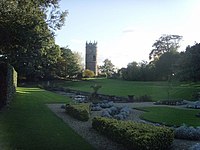
The Gardens of Goldney Hall were acquired by the Wills family
Burwalls, a mansion house on the other side of the Avon Gorge, was used as a halls of residence in the past and was a home of Sir George Oatley. The building is now used to house the Centre for Continuing Education.[69]
Many of the more modern buildings, including Senate House and the newer parts of the HH Wills Physics Laboratory, were designed by Ralph Brentnall after funds from the University Grants Committee. He is also responsible for the extension to the Wills Memorial Building library which was completed to such standard that few now realise that is an extension to the original building.[70] Brentnall oversaw the rebuilding of the Great Hall of the Wills Memorial Building after it was partly destroyed during the Bristol Blitz of World War II. The buildings of St Michael's Hill were rebuilt using hundreds of old photographs to recreate the original houses. The flats at Goldney Hall were designed by Michael Grice and received an award from the Civic Trust for their design.[71] Bristol University owns some of the best examples of Georgian architecture in the city, the best examples being Royal Fort House, Clifton Hill House and Goldney Hall despite some additions.[72] The Victoria Rooms which house the Music Department were designed by Charles Dyer and is seen as a good example of a Greek revival movement in British architecture. The tympanum of the building depicts a scene from The Advent of Morning designed by Jabez Tyley.[73] Its major feature was a large organ which has since been destroyed by fire.
In November 2016, the university announced that it plans to build a £300 million Temple Quarter Campus for c. 5,000 students, next to Bristol Temple Meads railway station within Bristol Temple Quarter Enterprise Zone. The new campus, which will include a business school, digital research facilities and a student village, is expected to open in 2021.[74] For the existing campus, there are plans to remodel Tyndall Avenue, pedestrianise the surrounding area and build a new library and resource hub.[75]
Organisation and governance
In common with most UK universities, Bristol is headed formally by the chancellor, currently Sir Paul Nurse and led on a day-to-day basis by the vice-chancellor, currently Hugh Brady, who is the academic leader and chief executive. There are four pro vice-chancellors and three ceremonial pro-chancellors.[76] The chancellor may hold office for up to ten years and the pro-chancellors for up to three, unless the University Court determines otherwise,[77][78] but the vice-chancellor and pro-vice-chancellors have no term limits.[79][80] The vice-chancellor is supported by a deputy vice-chancellor.
Responsibility for running the university is held at an executive level by the vice-chancellor, but the council is the only body that can recommend changes to the university's statutes and charter,[81] with the exception of academic ordinances. These can only be made with the consent of the senate, the chief academic body in the university which also holds responsibility for teaching and learning, examinations and research and enterprise.[81][82] The chancellor and pro chancellors are nominated by council and appointed formally by court, whose additional powers are now limited to these appointments and a few others, including some lay members of council.[83] Finally, Convocation, the body of all staff, ceremonial officers and graduates of the university, returns 100 members to court and one member to council,[76] but is otherwise principally a forum for discussion and to ensure graduates stay in touch with the university.
The university is made up of a number of schools and departments organised into six faculties:[84]

The Wills Memorial Library of Law and Earth Sciences
Faculty of Arts
- School of Arts
- Archaeology and Anthropology
- Film and Television
- Music
- Philosophy
- Theatre
- School of Humanities
- Classics & Ancient History
- English
- History (Historical Studies)
- History of Art (Historical Studies)
- Religion and Theology
- School of Modern Languages
- French
- German
- Hispanic, Portuguese and Latin American Studies
- Italian
- Russian
- Bristol Institute for Research in the Humanities and Arts
- Centre for English Language and Foundation Studies
- Graduate School of Arts and Humanities
Faculty of Engineering
- Graduate School of Engineering
- Merchant Venturers' School of Engineering (Now known as SCEEM)
- Computer Science
- Electrical & Electronic Engineering
- Engineering Mathematics
- Queen's School of Engineering (Now known as CAME)
- Aerospace Engineering
- Civil Engineering
- Mechanical Engineering

Faculty of Engineering Queen's Building
Faculty of Biomedical Sciences
- School of Biochemistry
- School of Cellular and Molecular Medicine
- School of Physiology, Pharmacology and Neuroscience
- Transfusion and Transplantation Science
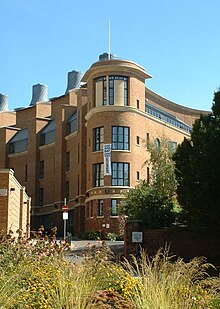
School of Chemistry
Faculty of Science
- School of Biological Sciences
- School of Chemistry
- School of Earth Sciences
- School of Experimental Psychology
- School of Geographical Sciences
- School of Mathematics
- School of Physics
- Interface Analysis Centre
- The Bristol Centre for Nanoscience and Quantum Information
Faculty of Health Sciences
- Centre for Health Sciences Education
- Centre for Comparative and Clinical Anatomy
- Teaching and Learning for Health Professionals
- School of Clinical Sciences
- School of Oral & Dental Sciences
- School of Social and Community Medicine
- School of Veterinary Sciences
Faculty of Social Sciences and Law
- Graduate School of Education
- School for Policy Studies
- Centre for Exercise, Nutrition and Health Sciences
- Norah Fry Research Centre
- School of Economics, Finance and Management
- Accounting and Finance
- Centre for Market and Public Organisation
- Economics
- Management
- School of Sociology, Politics and International Studies
- University of Bristol Law School
Academic dress
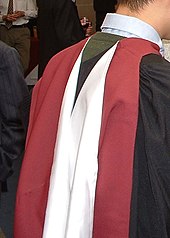
Master's hood at the University of Bristol
The university specifies a mix of Cambridge and Oxford academic dress. For the most part, it uses Oxford-style gowns and Cambridge-style hoods, which are required to be "university red"[85] (see the logo at the top of the page)
Logo and arms

University coat of arms
In 2004, the university unveiled its new logo. The icons in the logo are the sun for the Wills family, the dolphin for Colston, the horse for Fry and the ship-and-castle from the mediaeval seal of the City of Bristol, as also used in the coat of arms. The shape of the whole logo represents the open book of learning.[7] This logo has replaced the university arms shown, but the arms continue to be used where there is a specific historical or ceremonial requirement. The arms comprise:
argent on a cross quadrate gules the arms of the City of Bristol between in pale and a sun in splendour (for Wills) and an open book proper, leaved and clasped or, and inscribed with the words Nisi quia Dominus, and in fesse to the sinister a dolphin embowed (for Colston), and to the dexter a horse courant (for Fry), both of the third.
The inscription on the book is the Latin opening of the 124th Psalm, "If the Lord Himself had not (been on our side...)".[1]
Academic profile
Admissions
| 2017 | 2016 | 2015 | 2014 | 2013 | |
|---|---|---|---|---|---|
Applications[86] | 43,355 | 43,930 | 43,465 | 40,425 | 39,680 |
Offer Rate (%)[87] | 71.3 | 69.4 | 67.3 | 70.6 | 61.8 |
Enrols[88] | 5,790 | 5,530 | 5,385 | 5,165 | 4,810 |
Yield (%) | 18.7 | 18.1 | 18.4 | 18.1 | 19.6 |
Applicant/Enrolled Ratio | 7.49 | 7.94 | 8.07 | 7.83 | 8.25 |
Average Entry Tariff[89][note 1] | n/a | 184 | 485 | 476 | 486 |
Bristol had the 8th highest average entry qualification for undergraduates of any UK university in 2015, with new students averaging 485 UCAS points,[90] equivalent to just above AAAaa in A-level grades. Competition for places is high with an average 7.7 applications per place according to the 2014 Sunday Times League Tables, making it the joint 11th most competitive university in the UK.[91] The university gives offers of admission to 67.3% of its applicants, the 8th lowest amongst the Russell Group.[92]
According to the 2017 Times and Sunday Times Good University Guide, approximately 40% of Bristol's undergraduates come from independent schools.[93] In the 2016-17 academic year, the university had a domicile breakdown of 78:5:17 of UK:EU:non-EU students respectively with a female to male ratio of 55:45.[94]
Rankings and reputation
Global rankings | ||
| ARWU[95] (2018, world) | 74 | |
|---|---|---|
| QS[96] (2019, world) | 51 | |
| THE[97] (2018, world) | 76 | |
| CWTS Leiden[98] (2018, world) | 47 | |
National rankings | ||
| Complete[89] (2019, national) | 15 | |
| The Guardian[99] (2019, national) | 20 | |
| Times/Sunday Times[100] (2018, national) | 16= | |
British Government assessment | ||
| Teaching Excellence Framework[101] | Silver | |
Bristol was ranked 10th overall in The Sunday Times 10-year (1998–2007) average ranking of British universities based on consistent league table performance,[102] and is a member of the 'Sutton 13' of top ranked Universities in the UK.[103] Internationally, the 2016 QS World University Rankings[104] placed Bristol at 41st overall in the world. The 2012 / 2013 rankings also placed Bristol at 15th in the world in terms of reputation with employers, placing higher than several American Ivy League universities, including Princeton University, Cornell and UPenn. Bristol was chosen as the ninth best university in the UK for the quality of graduates according to recruiters from the UK's major companies.[105] Another international ranking, the Shanghai Jiao Tong University Academic Ranking of World Universities, placed Bristol 64th globally in 2013[106] The Times Higher Education World University Ranking placed Bristol at 66th in 2011.[107] Bristol is ranked 47th in the world (and 6th in the UK) in the 2016 Round University Ranking.[108]The 2017 U.S. News & World Report ranks Bristol 76th in the world.[109]
According to data published in The Sunday Times, Bristol has the sixth-highest percentage of "good honours" of any UK university.[110] In the 2010 Centre for Higher Education's Development's Excellence Rankings, Bristol is one of only four UK universities (Oxford, UCL and Manchester) to be rated Excellent in all seven departments.[111]

School of Geographical Sciences
The following courses offered by the University of Bristol managed to reach top 5 in The 'Times ranking (2008): Computer Science (3rd); Electrical and Electronic Engineering(3rd); Civil Engineering(5th); Biological Sciences(3rd); Mathematics (3rd); and Psychology (4th). Furthermore, the QS World University Rankings place Bristol in the world's top 100 universities for all subject areas in 2011: Arts and Humanities (57th), Natural Sciences (40th), Engineering & IT (83rd), Social Sciences (65th) and Life Sciences (70th).[112] A further breakdown of the QS World University Natural Sciences Ranking shows the following: Earth Sciences (25th),[113] Mathematics (35th),[114] Environmental Sciences (39th),[115] Physics (41st),[116] and Chemistry (48th).[117]
In addition, Bristol is particularly strong in the field of social sciences, particularly in economics, finance and management, and was rated fourth in the 2008 Guardian University Guide for Business and Management Studies.[118]
In 2011, The Guardian also ranked Bristol as third in the UK for geography, just behind second place Oxford[119] and ranked Bristol as 1st in the UK for Music.[120]
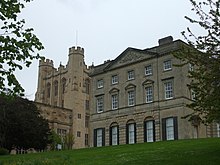
Royal Fort and the Physics department
In The Complete University Guide 2013, Bristol ranked fifth for German,[121] fourth for Russian,[122] third for mechanical and civil engineering,[123] third for music[124] and second for drama.[125]
Bristol is also known for its research strength, having 15 departments gaining the top grade of 5* in the 2001 Research Assessment Exercise. Overall, 36 out of 46 departments rated gained the top two ratings of 5 or 5*, and 76% of all the academic staff working in departments scored these top two levels.[126] In terms of teaching strength, Bristol had an average Teaching Quality Assessment score of 22.05/24 before the TQA was abolished.[127] Bristol's drop-out rate is also lower than the benchmark set by HEFCE of no more than 3.1%.[128]
Degrees
Bristol awards a range of academic degrees spanning bachelor's and master's degrees as well as junior doctorates and higher doctorates. The postnominals awarded are the degree abbreviations used commonly among British universities. The university is part of the Engineering Doctorate scheme,[129] and awards the Eng. D. in systems engineering, engineering management, aerospace engineering and non-destructive evaluation.[130]
Bristol notably does not award by title any bachelor's degrees in music, which is available for study but awarded B.A. (although it does award MMus and DMus), nor any degree in divinity, since divinity is not available for study (students of theology are awarded a B.A.). Similarly, the university does not award BLitt (Bachelor of Letters), although it does award both MLitt and DLitt. In regulations, the university does not name MD or DDS as higher doctorates, although they are in many universities[131] as these degrees are normally accredited professional doctorates.
The degrees of DLitt., DSc, DEng, LLD and DMus, whilst having regulations specifying the grounds for award,[132] are most often conferred as honorary degrees (in honoris causa).[133] Those used most commonly are the DLitt, DSc and LLD, with the MA (and occasionally the MLitt) also sometimes conferred honorarily for distinction in the local area or within the University.
Student life
Students' union
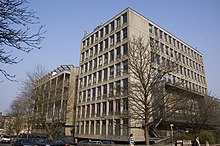
University of Bristol Union building
The University of Bristol Union (Bristol SU or BSU) located on Queen's Road is a founding member of the National Union of Students and is amongst the oldest students' unions in England. The union oversees the three official media outlets of the university- UBTV, the Bristol University Radio Station (BURST) and the student newspaper Epigram. There is also a highly active local branch of The Tab.[134] In terms of student life, the union is responsible for the organisation of the annual freshers' fair, the co-ordination of Bristol Student Community Action, which organises volunteering projects in the local community, and the organisation of entertainment events and very large number[135] of student societies. Previous presidents have included Sue Lawley and former Liberal Democrat MP Lembit Öpik. There is a separate union for postgraduate students, as well as an athletic union, which is a member of the British Universities & Colleges Sport.[136] In distinction to the "blues" awarded for sporting excellence at Oxford and Cambridge, Bristol's most successful athletes are awarded "reds".[137]
Halls of residence

Wills Hall
Accommodation for students is primarily in the central precinct of the university and two areas of Bristol: Clifton and Stoke Bishop.[138] In Stoke Bishop, Wills Hall on the edge of the Clifton Downs was the first to be opened, in 1929, by the then chancellor, Winston Churchill. Its original quadrangle layout has been expanded twice, in 1962 and 1990.[138]Churchill Hall, named for the chancellor, followed in 1956, then Badock Hall in 1964.[138][139] At the time of Badock Hall's establishment, some of the buildings were called Hiatt Baker Hall, but two years later, Hiatt Baker moved to its own site and is now the largest hall in the university.[138][140] The first self-catering hall in Stoke Bishop was University Hall, established in 1971 with expansion in 1992.[138] The University's newest undergraduate residence, 33 Colston Street, was opened in the city centre in October 2011 after acquiring the property in 2009.[138]
The university established a partnership with Unite PLC in order provide accommodation due to increase in number of students accepted for entry for academic year 2012/2013. A£20 million project of expanding facilities of Hiatt Baker is to provide additional 327 places for undergraduate students in 2014.[141] All of the main halls elect groups of students to the Junior Common Room to organise the halls social calendar for the next year. Residents of student houses, private accommodation and students living at home become members of Orbital – a society organising social events for students throughout the year.[138]
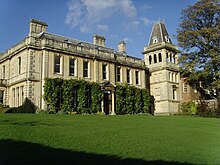
Goldney Hall
In Clifton, Goldney Hall was built first in the early 18th century by the wealthy merchant Goldney family and eventually became part of the university in 1956.[142] It is a popular location for filming, with The Chronicles of Narnia, The House of Eliott and Truly, Madly, Deeply, as well as episodes of Only Fools and Horses and Casualty, being filmed there.[143] The Grotto in the grounds is a Grade I listed building.[144]Clifton Hill House is another Grade I listed building now used as student accommodation in Clifton. The original building was constructed between 1745 and 1750 by Isaac Ware, and has been used by the university since its earliest days in 1909.[138][145]Manor Hall comprises five separate buildings, the principal of which was erected from 1927–1932 to the design of George Oatley following a donation from Henry Herbert Wills.

Clifton Hill House
One of its annexes, Manor House, has recently been refurbished and officially 'reopened' in 1999.[138][146] Goldney Hall has beautiful gardens and modern accommodation complexes. Clifton Hill House has more dated facilities, but as with all the Clifton residences also possesses attractive gardens. Manor Hall houses the largest and most dated rooms, some dating back to the early 20th century.
On the central precinct sits The Hawthorns, a student house accommodating 115 undergraduate students.[147] The house started life as a collection of villas built somewhere between 1888 and 1924[148] that were later converted, bit by bit, into a hotel by John Dingle.[149] The Hawthorns also houses conferencing facilities, the staff refectory and bar, the Accommodation Office and the Student Houses Office. Several of the residences in the central precinct are more recent and have been built and are managed by third-party organisations under exclusivity arrangements with the University. These include New Bridewell House, opened in 2016, which includes en-suite bedrooms and studios and is in the former police HQ and operated by Fresh Student Housing, Unite House and Chantry Court, opened in 2000 and 2003 respectively by the UNITE Group,[150][151][152] as well as Dean's Court (2001, postgraduates only) and Woodland Court (2005), both run by the Dominion Housing Group.[153][154]
Notable people
Academics
Current academics at the University of Bristol include 18 fellows of the Academy of Medical Sciences, 10 fellows of the British Academy, 13 fellows of the Royal Academy of Engineering and 31 fellows of the Royal Society.[155] These include, Sir Michael Berry, one of the discoverers of quantum mechanics' "geometric phase",[156]John Rarity international expert on quantum optics, quantum cryptography and quantum communication, David May, computer scientist and lead architect for the transputer,[157]Mark Horton, a British maritime and historical archaeologist.
Academics in computer science include, David Cliff, inventor of the seminal "ZIP" trading algorithm, Peter Flach, Mike Fraser, Professor of Human-computer interaction, Julian Gough and Nigel Smart.
Past academics of the university include, Patricia Broadfoot, Vice-Chancellor of the University of Gloucestershire, Nigel Thrift, Vice-Chancellor of the University of Warwick, and Wendy Larner, Provost of Victoria University of Wellington.[158][159]Anthony Epstein, co-discoverer of the Epstein-Barr virus, was Professor of Pathology at the university from 1968–1982.,[160] Sir John Lennard-Jones, discoverer of the Lennard-Jones potential in physics[161][162] and Alfred Marshall, one of the University College's principals and influential economist in the latter part of the 19th century.[163] Mathematicians and philosophers Rohit Parikh and Brian Rotman lectured in the mathematics department, and philosopher of science Paul Feyerabend taught in the Department of Philosophy.
The University of Bristol is associated with two Ig Nobel Prizes, an award for unusual or trivial achievements in scientific research. Sir Michael Berry shared the award (with Andre Geim, a Nobel Laureate) for using magnets to levitate a frog.[164] Gareth Jones also shared an Ig Nobel prize for scientifically documenting fellatio in fruit bats.[165]
Alumni

Jonathan Evans, former Head of MI5

Alastair Stewart, TV journalist

Derren Brown, illusionist
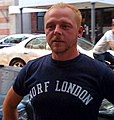
Simon Pegg, actor and writer
David Walliams, comedian
Bristol alumnus Paul Dirac went on to win the Nobel Prize in Physics in 1933 for his contribution to the formulation of quantum mechanics and is considered one of the most significant physicists of the 20th century.[citation needed] Other notable scientists include Dani Rabaiotti, an environmental scientist and science communicator.[166]
Other notable alumni include writers Dick King-Smith, Sarah Kane, Angela Carter, Dorothy Simpson, David Gibbins and David Nicholls, author of the novel Starter for Ten, turned into a screenplay set in the University of Bristol.[167]Mark Simmons, author of business books, Will Hutton, economist, author, commentator.
In entertainment and current affairs former students include, James Landale, BBC News Chief Political Correspondent who founded the university independent newspaper Epigram, William Lewis, editor-in-chief of the Telegraph Media Group, Derren Brown, illusionist, Sue Lawley, Radio 4 presenter, Alastair Stewart, newsreader and Dominic Waghorn, Sky News US Correspondent. Susanna Reid, ITV Breakfast anchor studied Politics, Philosophy and Law at the university between 1989 and 1992 and was also editor of the student newspaper, Epigram.
In comedy, Matt Lucas and David Walliams,[168]Simon Pegg, Chris Morris, creator of the controversial Brass Eye and Jon Richardson. Other comedy stars include Chris Langham, of The Thick of It fame, standup comic Marcus Brigstocke.
Other alumni include, Mike Bennett, digital media entrepreneur, Albert II, Prince of Monaco, musician James Blunt, former Liberal Democrat MP Lembit Öpik was President of Bristol University Students' Union during his time. Sir Jonathan Evans former head of MI5, Anne McClain, member of the 2013 NASA Astronaut Class[169] and Nkosazana Dlamini-Zuma, Chairperson of the African Union Commission from October 2012 to January 2017.
Notable alumni from the Film and Television Production department include film directors Mick Jackson, Michael Winterbottom, Marc Evans, Christopher Smith, Alex Cox, Peter Webber and Maddie Moate amongst many others.
See also
- CHOMBEC
- Education in Bristol
- List of modern universities in Europe (1801–1945)
Notes
^ New UCAS Tariff system from 2016
Notes and references
^ ab "The University Arms". University of Bristol. Archived from the original on 27 September 2007. Retrieved 3 December 2007.
^ abc "Financial Statements for the Year to 31 July 2017" (PDF). University of Bristol. p. 42. Retrieved 5 December 2017.
^ "Bristol University". Chancellor's biography. Archived from the original on 7 June 2007. Retrieved 13 May 2007.
^ "Institutions for which the President of the Council acts as Visitor". Privy Council Office. Archived from the original on 21 November 2007. Retrieved 20 December 2007.
^ "University of Bristol Facts & Figures". Retrieved 2 May 2015.
^ abc "2016/17 Students by HE provider, level, mode and domicile" (CSV). Higher Education Statistics Agency. Retrieved 25 March 2018.
^ ab "University of Bristol logo". University of Bristol. Archived from the original on 13 October 2007. Retrieved 3 December 2007.
^ "Maps and Guides". The University precinct map. Retrieved 28 April 2008.
^ "The University of Bristol Acts". The University of Bristol Act 1909. Retrieved 13 May 2007.
^ abcdefghi "Bristol University History". History of the University. Retrieved 13 May 2007.
^ Bristol, University of. "About our courses - Study at Bristol - University of Bristol". www.bristol.ac.uk.
^ "Key Facts and Figures". University of Bristol. 2014. Retrieved 12 January 2014.
^ "University of Bristol". QS Top Universities. Retrieved 29 November 2017.
^ "Best universities in the UK 2018". Times Higher Education. 5 September 2017. Retrieved 5 April 2018.
^ Bristol, University of. "Facts and figures - About the University - University of Bristol". www.bristol.ac.uk.
^ "Research Excellence Framework results 2014" (PDF).
^ "REF 2014 results". The Guardian. Retrieved 24 March 2015.
^ "Nobel Prizes and Fellowships". University of Bristol. Retrieved 2 May 2015.
^ "Russell Group Our Universities". Retrieved 27 January 2012.
^ "The Coimbra Group". List of Coimbra Group Members. Archived from the original on 2 May 2013. Retrieved 14 May 2007.
^ "The Worldwide Universities Network". List of WUN Group Members. Retrieved 14 May 2007.
^ Bristol, University of. "Our research impact - Research - University of Bristol". www.bristol.ac.uk.
^ United Kingdom. "Education – The Society of Merchant Venturers, Bristol UK". Merchantventurers.com. Archived from the original on 29 August 2009. Retrieved 5 June 2009.
^ "University of Bristol". The Guardian. London. 1 May 2007. Retrieved 6 December 2007.
^ abc "Papers of the University of Bristol". Archives Hub. Archived from the original on 29 February 2012. Retrieved 6 December 2007.
^ ab "Charter of Incorporation". University of Bristol. Archived from the original on 30 September 2007. Retrieved 3 December 2007.
^ "Table 0a – All students by institution, mode of study, level of study, gender and domicile 2006/07". Higher Education Statistics Agency. Archived from the original (Microsoft Excel spreadsheet) on 9 July 2013. Retrieved 5 April 2008.
^ "Wills Tower set for new glory". Bristol University. Retrieved 12 November 2015.
^ "Bristol". Archived from the original on 13 December 2007. Retrieved 6 December 2007.
^ abcd "Bristol University – Former Officers". University of Bristol. Archived from the original on 27 September 2007. Retrieved 22 June 2007.
^ "Wills Memorial Building". Retrieved 6 December 2007. [dead link]
^ "University Tower and Wills Memorial Building and attached front walls and lamps". National Monument Record. English Heritage. Archived from the original on 22 November 2007. Retrieved 6 December 2007.
^ "Victoria Rooms and attached railings and gates". National Monument Record. English Heritage. Archived from the original on 22 November 2007. Retrieved 6 December 2007.
^ ab "Undergraduate admissions principles and procedures (Home/EU students)". Bristol University. Retrieved 8 August 2013.
^ "Notable alumni – Faculty of Engineering". University of Bristol. Retrieved 6 December 2007.
^ "History of the Department". Department of Physics, University of Bristol. Retrieved 6 December 2007.
^ "The Nobel Prize in Physics 1950". The Nobel Foundation. Retrieved 6 December 2007.
^ "Hans Bethe – Biography". The Nobel Foundation. Retrieved 6 December 2007.
^ "Sir Nevill F. Mott". The Nobel Foundation. Retrieved 6 December 2007.
^ "The Students' Union". University of Bristol Union. Archived from the original on 26 November 2007. Retrieved 6 December 2007.
^ "What is the worst eyesore in the UK?". BBC News. 21 November 2003.
^ "University of Bristol Strategic Masterplan" (PDF). University of Bristol. July 2006. p. 64. Retrieved 6 December 2007.
^ "Building Project – A Better Building for the Students' Union". Ubu.org.uk. Retrieved 28 January 2011.
^ "Students' union breaks from NUS". BBC News. 5 February 2004. Retrieved 20 December 2007.
^ "General introduction of the PGU". University of Bristol Postgraduate Union. Archived from the original on 27 December 2007. Retrieved 20 December 2007.
^ Donald MacLeod (5 December 2005). "Bristol signs commercial research funding deal". The Guardian. London. Retrieved 3 December 2007.
^ "Bristol University – Centre for Sport, Exercise & Health – About us". University of Bristol. 2 October 2007. Archived from the original on 30 October 2007. Retrieved 20 December 2007.
^ "Bristol University – Centre for Sport, Exercise & Health – community programmes". University of Bristol. 28 September 2007. Archived from the original on 26 November 2007. Retrieved 20 December 2007.
^ "Places – BLADE". University of Bristol. 20 December 2007. Archived from the original on 30 September 2007. Retrieved 20 December 2007.
^ "CETL – A£14M Boost for Teaching and Learning in Bristol Chemistry – 27/01/05". University of Bristol. 14 December 2007. Retrieved 20 December 2007.
^ "'Quietest' building in the world opens today". University of Bristol. Retrieved 15 September 2011.
^ Bowden, Chris (10 September 2007). "University of Bristol Masterplan". University of Bristol. Retrieved 20 December 2007.
^ "New £50 million University building to transform a key area of Bristol". University of Bristol. Retrieved 21 October 2011.
^ "University of Bristol: Fry Building". WilkinsonEyre. Retrieved 6 January 2018.
^ "Work to create £33 million mathematics building gets underway". University of Bristol. Retrieved 6 January 2018.
^ "Bristol University fire: Live updates as Fry building undergoing major refurb goes up in flames with smoke seen across city". Bristol Post. 6 January 2018. Retrieved 6 January 2018.
^ "Bristol University fire: Crews tackle campus blaze". BBC. Retrieved 6 January 2018.
^ "Elite uni aims to broaden its appeal". BBC News. 18 January 2002. Retrieved 12 December 2007.
^ "Understated". Etan Smallman: Epigram Online. Archived from the original on 27 September 2007. Retrieved 12 December 2007.
^ "ISC Pupil Numbers – Independent Schools Council". Isc.co.uk. Archived from the original on 18 January 2012. Retrieved 21 January 2012.
^ "Oxford drops below Cambridge on state school entrants". 27 March 2014.
^ "The sad side of Bristol Uni". Thetartpaper.com. Archived from the original on 19 July 2009. Retrieved 28 January 2011.
^ "Private schools 'boycott' Bristol". BBC News. 4 March 2003. Retrieved 12 December 2007.
^ "Bristol remains firm on admissions". BBC News. 23 June 2003. Retrieved 12 December 2007.
^ "'No bias' against private pupils". BBC News. 17 August 2005. Retrieved 12 December 2007.
^ Carleton (1984), p129
^ Higher Education Quality Council (1993), p2
^ Carleton (1984), p132
^ "Burwalls Centre for Continuing Education". University of Bristol. Retrieved 16 June 2008.
^ Carleton (1984), p138
^ Carleton (1984), p139
^ Carleton (1984), p141
^ Carleton (1984), p136
^ Yong, Michael (29 November 2016). "Bristol University to take over old sorting office by Temple Meads for new £300m campus". Bristol Post. Retrieved 29 November 2016.
^ http://www.bristol.ac.uk/media-library/sites/university/documents/governance/policies/university-strategy.pdf
^ ab "Governance: How the University is run". University of Bristol. Retrieved 21 December 2007.
^ "Statute 3 – The Chancellor". University of Bristol. 15 March 2000. Retrieved 21 December 2007.
^ "Statute 4 – The Pro-Chancellors". University of Bristol. Archived from the original on 27 May 2008. Retrieved 21 December 2007.
^ "Statute 5 – The Vice-Chancellor". University of Bristol. 15 March 2000. Archived from the original on 27 May 2008. Retrieved 21 December 2007.
^ "Statute 6 – The Pro Vice-Chancellors". University of Bristol. 24 February 2004. Archived from the original on 27 May 2008. Retrieved 21 December 2007.
^ ab "Council". University of Bristol. Retrieved 21 December 2007.
^ "Senate". University of Bristol. Retrieved 21 December 2007.
^ "Statute 13 – Powers of Court". University of Bristol. 7 May 2005. Retrieved 21 December 2007.
^ "Academic Departments and Research Centres by Faculty". University of Bristol. Retrieved 10 August 2007.
^ "Regulations for Academic and Official Costume". University of Bristol Regulations for Academic and Official Costume. Archived from the original on 26 November 2007. Retrieved 21 December 2007.
^ "End of Cycle 2017 Data Resources DR4_001_03 Applications by provider". UCAS. UCAS. 2017. Retrieved 25 January 2018.
^ "Sex, area background and ethnic group: B78 University of Bristol". UCAS. UCAS. 2017. Retrieved 25 January 2018.
^ "End of Cycle 2017 Data Resources DR4_001_02 Main scheme acceptances by provider". UCAS. UCAS. 2017. Retrieved 25 January 2018.
^ ab "University League Table 2019". The Complete University Guide. Retrieved 26 April 2018.
^ "University League Table 2018". Complete University Guide. Retrieved 25 April 2017.
^ HitCreative. "The Times and The Sunday Times - Education - Table UniversityGuide". st.hitcreative.com.
^ "Which elite universities have the highest offer rates". The Telegraph. Retrieved 21 October 2016.
^ "The Times and Sunday Times Good University Guide 2017". The Good University Guide. London. Retrieved 16 August 2016. (subscription required)
^ "Where do HE students study?". hesa.ac.uk. Higher Education Statistics Authority. Retrieved 9 February 2018.
^ "Academic Ranking of World Universities 2018". Shanghai Ranking Consultancy. Retrieved 15 August 2018.
^ "QS World University Rankings 2019". Quacquarelli Symonds Ltd. Retrieved 6 June 2018.
^ "World University Rankings 2018". Times Higher Education. Retrieved 5 September 2017.
^ "CWTS Leiden Ranking 2018 - PP top 10%". CWTS Leiden Ranking 2018. Retrieved 16 May 2018.
^ "University league tables 2019". The Guardian. 29 May 2018. Retrieved 29 May 2018.
^ "The Times and Sunday Times University Good University Guide 2018". Times Newspapers. Retrieved 24 September 2017.
^ "Teaching Excellence Framework outcomes". Higher Education Funding Council for England. Retrieved 11 June 2018.
^ "University ranking based on performance over 10 years" (PDF). The Times. London. 2007. Archived from the original (PDF) on 14 April 2008. Retrieved 28 April 2008.
^ "Old school 'key to student place'". BBC. 20 September 2007. Retrieved 31 January 2009.
^ "QS World University Rankings". Topuniversities. Retrieved 31 March 2017.
^ "The best UK universities chosen by major employers". Times Higher Education. London. 12 November 2015.
^ "AWRU 2013". Retrieved 30 April 2012.
^ "World University Rankings 2011–2012". Times Higher Education. Retrieved 16 August 2013.
^ "Round University Rankings 2016". RUR Rankings Agency. Retrieved 22 September 2016.
^ "U.S. News and World Report Best Global Universities Rankings 2017". U.S. News and World Report.
^ "University league table". London: The Sunday Time. 30 July 2014. Retrieved 21 December 2014.
^ "The Best European Universities". Die Zeit. 3 November 2010. Retrieved 5 November 2010.
^ "QS World University Subject Rankings for the University of Bristol". Archived from the original on 29 August 2011. Retrieved 31 May 2011.
^ "QS World University Rankings". Archived from the original on 22 May 2011. Retrieved 31 May 2011.
^ "QS World University Rankings". Archived from the original on 22 May 2011. Retrieved 31 May 2011.
^ "QS World University Rankings". Archived from the original on 22 May 2011. Retrieved 31 May 2011.
^ "QS World University Rankings". Archived from the original on 22 May 2011. Retrieved 31 May 2011.
^ "QS World University Rankings". Archived from the original on 22 May 2011. Retrieved 31 May 2011.
^ "Bristol University | Bristol Ranked Fourth". Bristol.ac.uk. Retrieved 28 January 2011.
^ "Guardian University Rankings 2011 (Geography and Environmental Studies)". London: The Guardian Newspaper. 8 June 2010. Retrieved 23 April 2011.
^ "University guide 2012: Music". The Guardian. London. 17 May 2011. Retrieved 21 January 2012.
^ "University Subject Tables 2013 – German;". London. 20 September 2012. Retrieved 3 December 2012.
^ "University Subject Tables 2013 – Russian & East European Languages;". London. 20 September 2012. Retrieved 3 December 2012.
^ "University Subject Tables 2013 – Mechanical Engineering;". London. 20 September 2012. Retrieved 3 December 2012.
^ "University Subject Tables 2013 – Music;". Bristol. 20 September 2012. Retrieved 24 January 2013.
^ "University Subject Tables 2013 – Drama, Dance & Cinematics;". London. 20 September 2012. Retrieved 3 December 2012.
^ "2001 Research Assessment Exercise Results". Higher Education and Research Opportunities. Archived from the original (xls) on 15 March 2007. Retrieved 21 December 2007.
^ "HEFCE TQA/QAA SUBJECT REVIEW RESULTS TABLE 1993–present". University of Bristol. Retrieved 21 December 2007.
^ "University dropout rate". BBC News. 19 July 2007. Retrieved 21 December 2007.
^ "Engineering Doctorate Centre Details". Engineering and Physical Sciences Research Council. Archived from the original on 7 February 2006. Retrieved 18 July 2006.
^ "Regulations for the Degree of Engineering Doctorate (Eng. D.)". University of Bristol. Retrieved 6 August 2007.
^ "Regulations for Dissertations for Doctoral and Masters Degrees..." University of Bristol. Archived from the original on 7 March 2005. Retrieved 6 August 2007.
^ "Regulations for the Degrees of Doctor of Letters, Doctor of Science, Doctor of Engineering and Doctor of Laws". University of Bristol. Archived from the original on 3 September 2007. Retrieved 6 August 2007.
^ "Honorary Graduates". University of Bristol. Retrieved 6 August 2007.
^ https://thetab.com/uk/bristol/
^ "BSU Societies". University of Bristol Union. Archived from the original on 4 September 2015. Retrieved 24 April 2015.
^ "BUSA Members". BUSA. Archived from the original on 12 June 2007. Retrieved 3 December 2007.
^ "Bristol Reds". University of Bristol. Retrieved 3 December 2007.
^ abcdefghi "Accommodation Office". University of Bristol. Retrieved 12 January 2014.
^ "Badock Hall Prospectus". University of Bristol. Retrieved 21 December 2007.
^ "Hiatt Baker Hall History". University of Bristol. Retrieved 21 December 2007.
^ "£20 million scheme underway to boost student accommodation Press release". Archived from the original on 12 January 2014. Retrieved 12 January 2014.
^ "Goldney Hall History". University of Bristol. Retrieved 21 December 2007.
^ "Titles with locations including Goldney Hall, Clifton, Bristol, England, UK". Internet Movie Database. Retrieved 3 January 2007. [permanent dead link]
^ "Grotto approximately 85 metres south of Goldney House, Clifton Hill, Bristol". National Monument Record. English Heritage. Archived from the original on 22 November 2007. Retrieved 21 December 2007.
^ "Clifton Hill House and attached front walls, Clifton Hill, Bristol". National Monument Record. English Heritage. Archived from the original on 8 November 2007. Retrieved 21 December 2007.
^ "Manor Hall and Sinclair House History". University of Bristol. Retrieved 21 December 2007.
^ "The Hawthorns webpage". University of Bristol. Retrieved 13 July 2011.
^ Bristol Record Office: Volume 19, Folio 74 and Volume 22, Folio 34
^ "University of Bristol Supplementary Planning Document Number 11" (PDF). University of Bristol. Archived from the original (PDF) on 11 January 2012. Retrieved 13 July 2011.
^ "UNITE House in Bristol". UNITE Group plc. Archived from the original on 24 December 2007. Retrieved 21 December 2007.
^ "Chantry Court". University of Bristol. Archived from the original on 22 October 2007. Retrieved 21 December 2007.
^ "Chantry Court in Bristol". UNITE Group plc. Archived from the original on 24 December 2007. Retrieved 21 December 2007.
^ "Dean's Court". University of Bristol. Archived from the original on 22 October 2007. Retrieved 21 December 2007.
^ "Woodland Court". University of Bristol. Retrieved 21 December 2007.
^ "Nobel Prizes and Fellowships". University of Bristol. Retrieved 2 October 2011.
^ "Michael Berry". HP Labs. Retrieved 29 December 2007.
^ MAY, Prof. (Michael) David. ukwhoswho.com. Who's Who. 2015 (online Oxford University Press ed.). A & C Black, an imprint of Bloomsbury Publishing plc.
(subscription required)
^ "Patricia Broadfoot". University of Gloucestershire. Archived from the original on 20 October 2007. Retrieved 29 December 2007.
^ "About the Vice-Chancellor". University of Warwick. Archived from the original on 15 December 2007. Retrieved 29 December 2007.
^ "Honorary Fellowship for Professor Sir Anthony Epstein" (Press release). University of Bristol. 18 July 2006. Retrieved 29 December 2007.
^ Lennard-Jones, J. E. (1931). "Cohesion". Proceedings of the Physical Society. 43 (5): 461–482. Bibcode:1931PPS....43..461L. doi:10.1088/0959-5309/43/5/301.
^ H. Jones (1931). "Notes on Work at the University of Bristol, 1930-7". Proceedings of the Royal Society of London, Series A. 371 (1744): 52–55.
^ "Alfred Marshall". Economy Professor. Retrieved 29 December 2007.
^ Berry, M. V.; Geim, A. K. (1997). "Of flying frogs and levitrons" (PDF). European Journal of Physics. 18 (4): 307. Bibcode:1997EJPh...18..307B. doi:10.1088/0143-0807/18/4/012.
^ Tan, M.; Jones, G.; Zhu, G.; Ye, J.; Hong, T.; Zhou, S.; Zhang, S.; Zhang, L. (2009). Hosken, David, ed. "Fellatio by Fruit Bats Prolongs Copulation Time". PLoS ONE. 4 (10): e7595. Bibcode:2009PLoSO...4.7595T. doi:10.1371/journal.pone.0007595. PMC 2762080 . PMID 19862320.
. PMID 19862320.
^ "Daniella Rabaiotti". Zoological Society of London (ZSL). Retrieved 2018-04-07.
^ "Starter for Ten". BBC Bristol. Retrieved 21 December 2007.
^ "Notable alumni". Bristol University. Retrieved 21 December 2007.
^ Video on YouTube
Further reading
.mw-parser-output .refbeginfont-size:90%;margin-bottom:0.5em.mw-parser-output .refbegin-hanging-indents>ullist-style-type:none;margin-left:0.mw-parser-output .refbegin-hanging-indents>ul>li,.mw-parser-output .refbegin-hanging-indents>dl>ddmargin-left:0;padding-left:3.2em;text-indent:-3.2em;list-style:none.mw-parser-output .refbegin-100font-size:100%
Carleton, Don (1984). University for Bristol: A History in Text and Pictures. University of Bristol. ISBN 0-86292-200-3.
Delany, Rosalind (2002). How Did This Garden Grow?: The History of the Botanic Gardens of the University of Bristol. Friends of Bristol University Botanic Garden. ISBN 0-9543504-0-5.
Crossley Evans, M. J. (1994). A History of Wills Hall University of Bristol. University of Bristol. ISBN 0-86292-421-9.
Whittingham, Sarah (2003). Wills Memorial Building. University of Bristol. ISBN 0-86292-541-X.
External links
| Wikimedia Commons has media related to University of Bristol. |
- Official website
Bristol SU (Students' Union)





